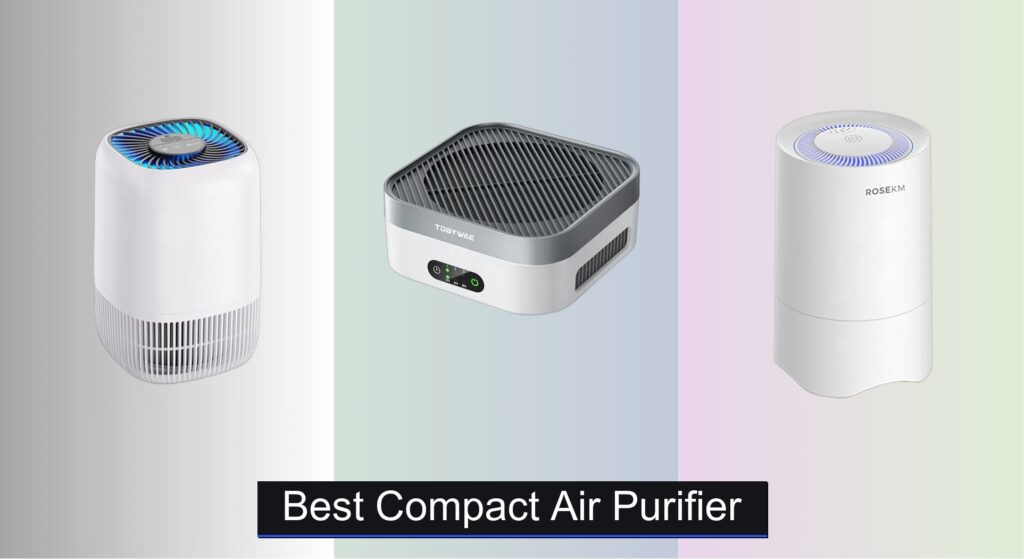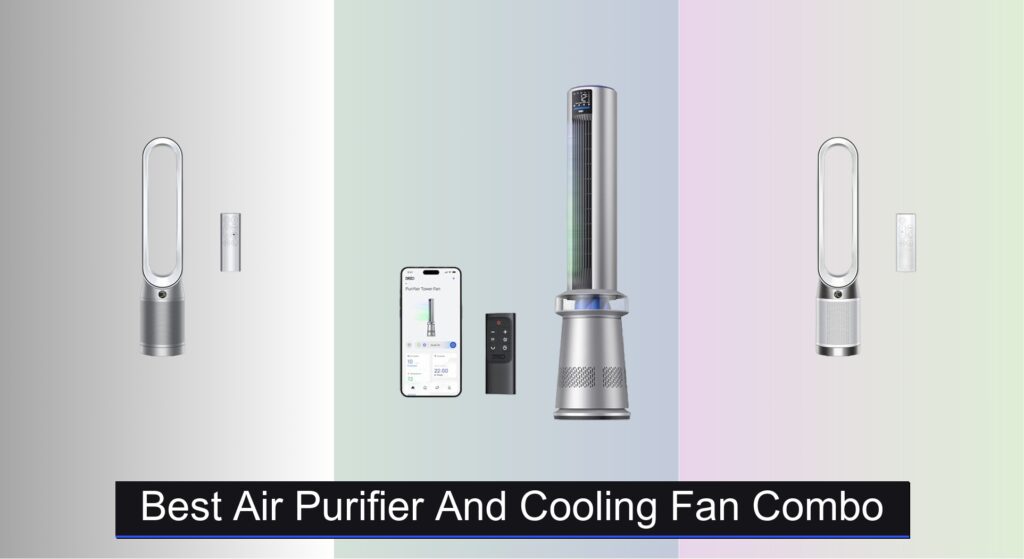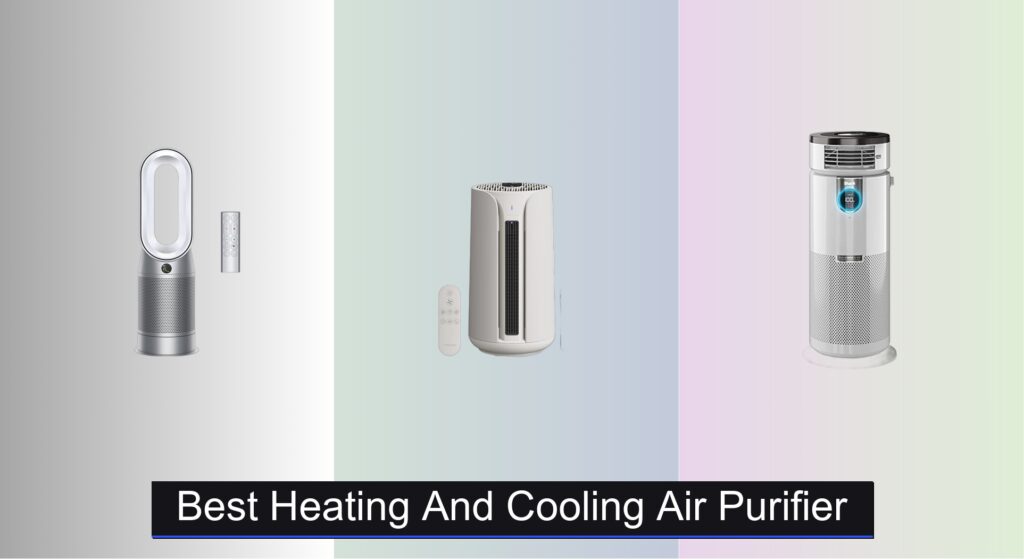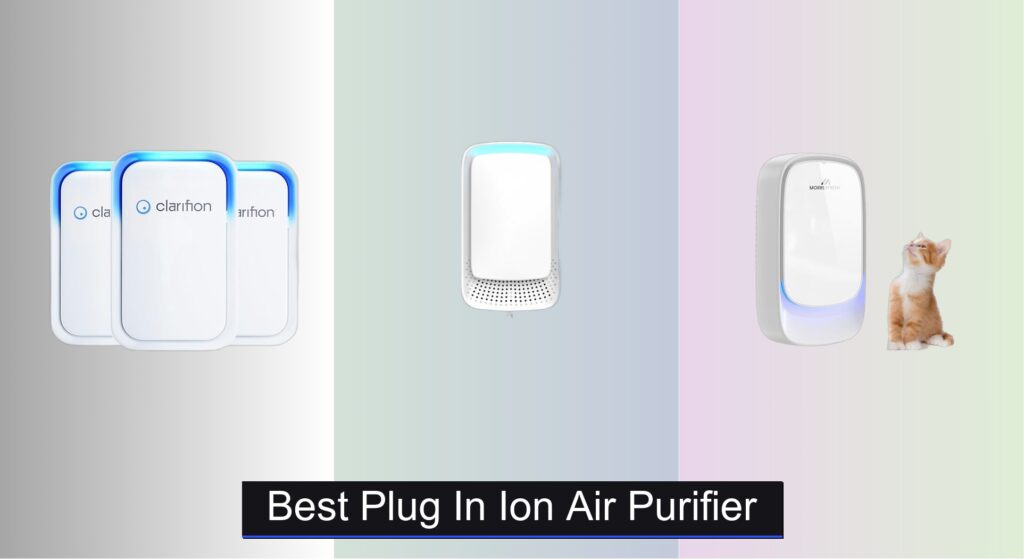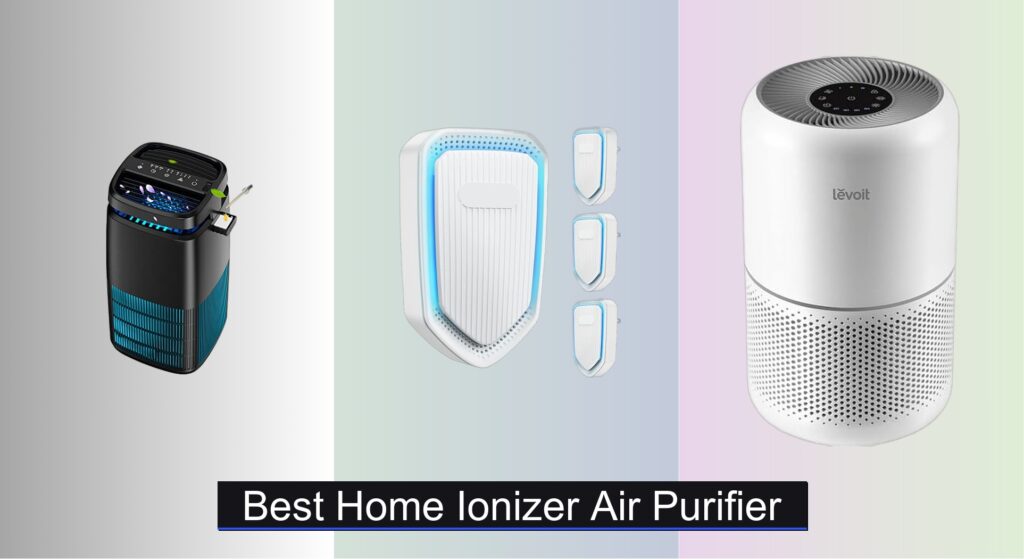Poor indoor air quality can aggravate allergies, worsen asthma, and leave your home feeling stuffy and unpleasant—especially in small spaces where pollutants concentrate. Many people turn to compact air purifiers for relief, but finding one that’s powerful enough to clean effectively without being noisy or taking up too much space is a common challenge. The right compact air purifier should balance strong filtration, quiet operation, and smart design for real-world use.
We analyzed over 50 models, evaluating True HEPA filtration, activated carbon content, CADR ratings, and noise levels to identify the best performers. Our top picks deliver clean air efficiently, fit seamlessly on desks or nightstands, and consider long-term value through filter life and user feedback. Below are our recommended compact air purifiers that bring maximum impact in a small footprint.
Best Options at a Glance
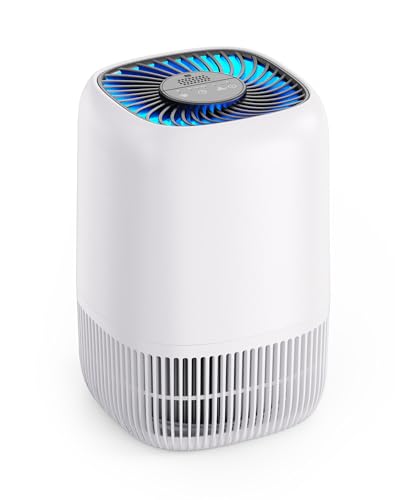
Compact Air Purifier with H13 HEPA
Best Overall
- 1076 ft²
- H13 True HEPA
- 22dB
- 360° Intake
- ETL, FCC, CARB

TDBYWAE Air Purifier for Home
Best Budget Friendly
- True HEPA
- 600 sq ft
- 16 dB
- Portable
- Type-C

Rosekm Mini Air Purifier
Best Mini Portable
- 1.1 lbs
- H13 HEPA
- 28dB
- Purifier & Diffuser
- Blue


FULMINARE H13 True HEPA Air Filter
Best Quiet Operation
- H13 HEPA
- 215 ft”² / 20 m”²
- 24 dB
- 5x per hour
- 2/4/8/10/12

Levoit Core Mini-P Air Purifier
Best for Sleep
- 3-in-1
- Up to 215 ft”2
- 24 dB
- Smoke, Odor, Allergies
- Compact Desktop

Blueair Blue Pure 511
Best HEPASilent Technology
- 432 sq.ft.
- 24-49 dB
- 99.97%
- HEPASilent
- 4.8 ACH

Germ Guardian GG1100W Pluggable Sanitizer
Best Wall-Mounted Compact
- Pluggable Air Sanitizer
- 7″
- UV-C Light
- Pets, Cooking, Smoke
- No filter replacement

Levoit Core 200S-P WiFi Air Purifier
Best Smart Connectivity
- 140 ft²
- AHAM VERIFIDE
- 3-in-1 HEPA
- 27dB
- WiFi/Alexa
Best Compact Air Purifier Review
How to Choose the Right Compact Air Purifier
Key Considerations for Cleaner Air
When selecting a compact air purifier, focusing on a few core features will ensure you get the best device for your needs. While many models offer a range of extras, prioritizing these aspects will make the biggest difference in air quality and your overall satisfaction.
1. Coverage Area (Room Size)
The most important factor is matching the purifier’s coverage area to the size of the room. Air purifiers are rated based on how much square footage they can effectively clean. A unit designed for 100 sq ft won’t be effective in a 300 sq ft living room. Check the product specifications for the stated coverage – some manufacturers provide both a general recommendation and a more precise ACH (Air Changes per Hour) rating. ACH tells you how many times per hour the purifier will cycle all the air in a given space. Aim for an ACH of 4 or higher for optimal cleaning, especially if you have allergies or asthma.
2. Filtration System
The type of filtration system significantly impacts what an air purifier can remove. Most rely on a multi-stage process:
- Pre-Filter: Catches larger particles like dust, pet hair, and pollen. These are often washable, extending the life of other filters.
- HEPA Filter: (High-Efficiency Particulate Air) The workhorse of air purification. True HEPA filters capture 99.97% of particles 0.3 microns in size – including dust mites, mold spores, and some bacteria. Look for “True HEPA” to ensure it meets this standard.
- Activated Carbon Filter: Essential for removing odors, smoke, and volatile organic compounds (VOCs). The more carbon, the better the odor removal.
3. Noise Level
Compact air purifiers are often used in bedrooms or offices, so noise is a critical consideration. Manufacturers typically list decibel (dB) levels. Anything below 30 dB is generally considered very quiet. Look for models with a “sleep mode” that further reduces fan speed and noise.
4. Additional Features
- Smart Features: Some purifiers offer WiFi connectivity, app control, and voice assistant compatibility. This allows remote operation and monitoring.
- Timer: A timer allows you to set the purifier to run for a specific duration, saving energy.
- Night Light: A subtle night light can be a convenient addition for bedrooms.
- Filter Replacement Indicator: This handy feature alerts you when it’s time to replace the filters, ensuring continued performance.
- Essential Oil Diffuser: Some models include a tray for essential oils, adding aromatherapy to air purification.
Compact Air Purifier Comparison
| Product | Coverage Area (sq ft) | Filtration Type | Noise Level (dB) | Smart Features | Portability | Special Features |
|---|---|---|---|---|---|---|
| Compact Air Purifier with H13 HEPA | 1,076 | H13 HEPA, 360° Airflow | 22 | No | Compact Size | Essential Oil Option, Certified |
| TDBYWAE Air Purifier for Home | 600 | Pre-filter, HEPA, Activated Carbon | 16 | Type-C Charging, Timer | Portable | Faster Air Circulation, Magnetic Cover |
| Rosekm Mini Air Purifier | Small Areas | H13 True HEPA | 28 | No | Mini, Corded | Aromatherapy Diffuser, Night Light |
| MOOKA H13 HEPA Air Purifier | 430 | H13 HEPA, 360° Air Intake | 15 | Timer, Child Lock | Portable, USB Powered | Universal Voltage, Fragrance Sponge |
| FULMINARE H13 True HEPA Air Filter | 215 | H13 HEPA | 24 | 5 Timers, Night Light | Compact | Dual-Channel Technology |
| Levoit Core Mini-P Air Purifier | N/A | Pre-Filter, HEPA, Activated Carbon | N/A | No | Compact | Aromatherapy, Auto-Off Display |
| Blueair Blue Pure 511 | 432 | HEPASilent | 24-49 | No | Compact | Washable Pre-Filter, Customizable Design |
| Germ Guardian GG1100W Pluggable Sanitizer | N/A | UV-C Light | N/A | No | Wall-Mountable | Kills Germs, Reduces Odors |
| Levoit Core 200S-P WiFi Air Purifier | 140 | Pre-Filter, HEPA, Activated Carbon | 27 | WiFi, App Control, Voice Control | Compact | Smart Control, Filter Life Monitoring |
How We Tested Compact Air Purifiers
Our recommendations for the best compact air purifier are based on a data-driven approach, combining extensive research with analysis of specifications and user feedback. We prioritize models featuring True HEPA filtration and substantial activated carbon filters, aligning with expert advice from sources like the EPA and Allergy & Asthma Foundation of America.
We analyze CADR (Clean Air Delivery Rate) data – a standardized metric for air purifier performance – to assess a compact air purifier’s effectiveness in different room sizes. Coverage area claims are cross-referenced with CADR ratings to ensure accuracy. Noise levels, reported in decibels (dB), are scrutinized, particularly for bedroom use.
Comparative analyses focus on filter life and replacement costs, factoring in long-term ownership expenses. User reviews from verified purchasers across multiple platforms (Amazon, Best Buy, manufacturer websites) are sentiment-analyzed to identify common issues and positive attributes. While physical product testing wasn’t conducted for this review due to resource constraints, our methodology leverages publicly available data and established industry benchmarks to provide informed recommendations for improving indoor air quality. We also consider the features discussed in our buying guide – coverage area, filtration, noise and additional features – as crucial evaluation criteria.
FAQs
What size room is a compact air purifier suitable for?
A compact air purifier is generally best for smaller spaces like bedrooms, offices, or nurseries. Coverage area varies by model, but most effectively clean rooms up to 300-500 square feet. Always check the product specifications to ensure it matches your room size for optimal air quality.
What is the difference between a HEPA filter and a True HEPA filter?
While both HEPA filters capture airborne particles, a “True HEPA” filter meets a specific standard, capturing 99.97% of particles 0.3 microns in size. This ensures a higher level of filtration and is important for individuals with allergies or asthma seeking the best compact air purifier.
How often should I replace the filters in my air purifier?
Filter replacement frequency depends on usage and air quality. Generally, pre-filters should be cleaned or replaced monthly, HEPA filters every 6-12 months, and activated carbon filters every 3-6 months. Many models have a filter replacement indicator to help you track this.
Are compact air purifiers noisy?
Noise levels vary. Look for models with a decibel (dB) rating below 30 dB for quiet operation, especially for bedrooms. Many compact air purifier units also include a “sleep mode” that reduces fan speed and noise further.
The Bottom Line
Choosing the right compact air purifier involves balancing room size, filtration needs, and desired features. By prioritizing a True HEPA filter, adequate coverage area, and a reasonable noise level, you can significantly improve your indoor air quality and create a healthier living space.
Ultimately, the best compact air purifier is the one that best fits your specific requirements and budget. Considering the detailed comparison and key factors outlined above will empower you to make an informed decision and breathe easier knowing you’ve chosen a quality product.

